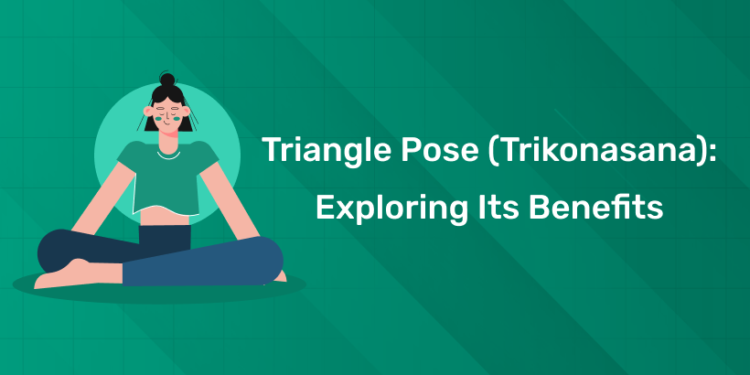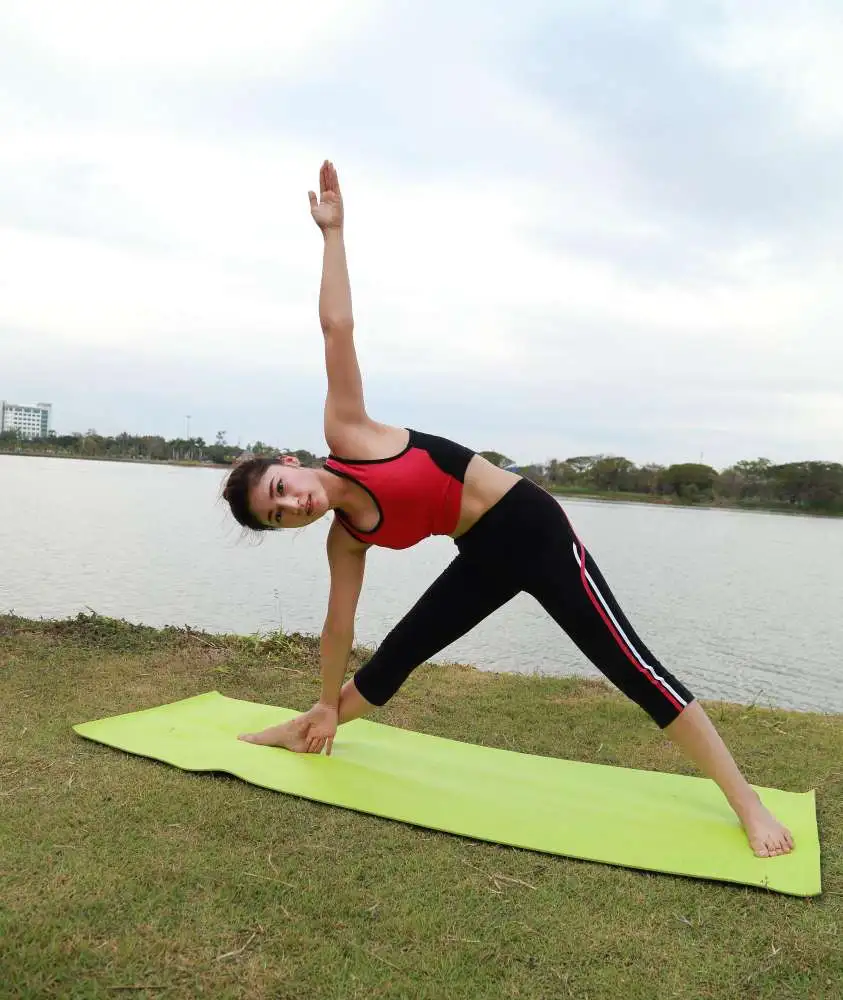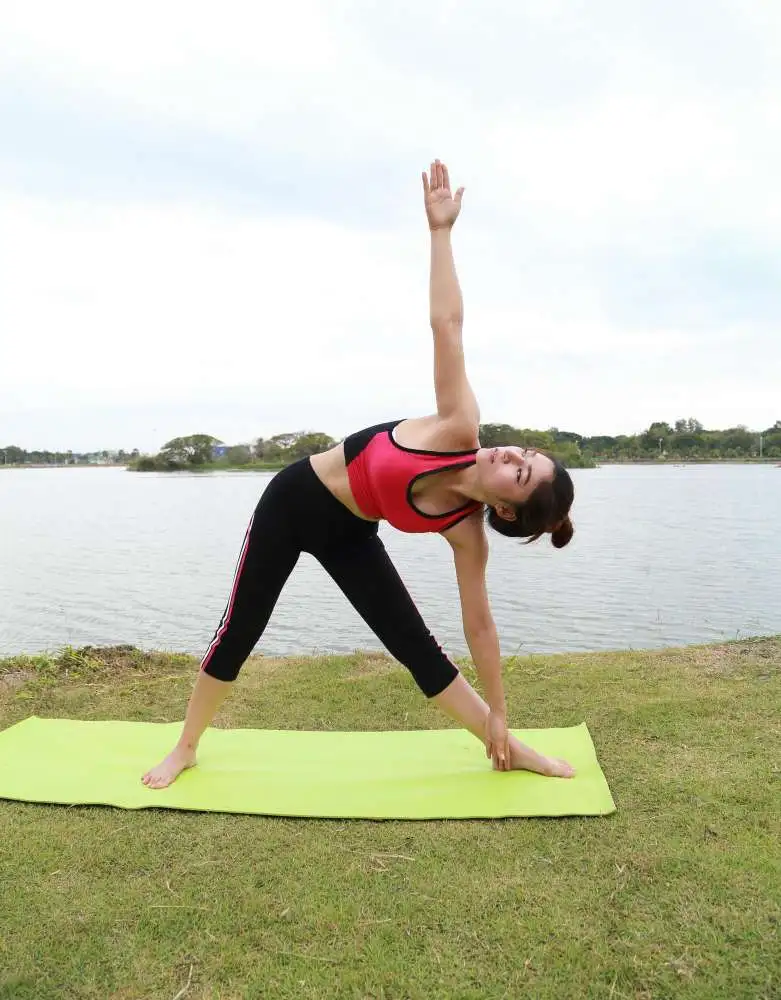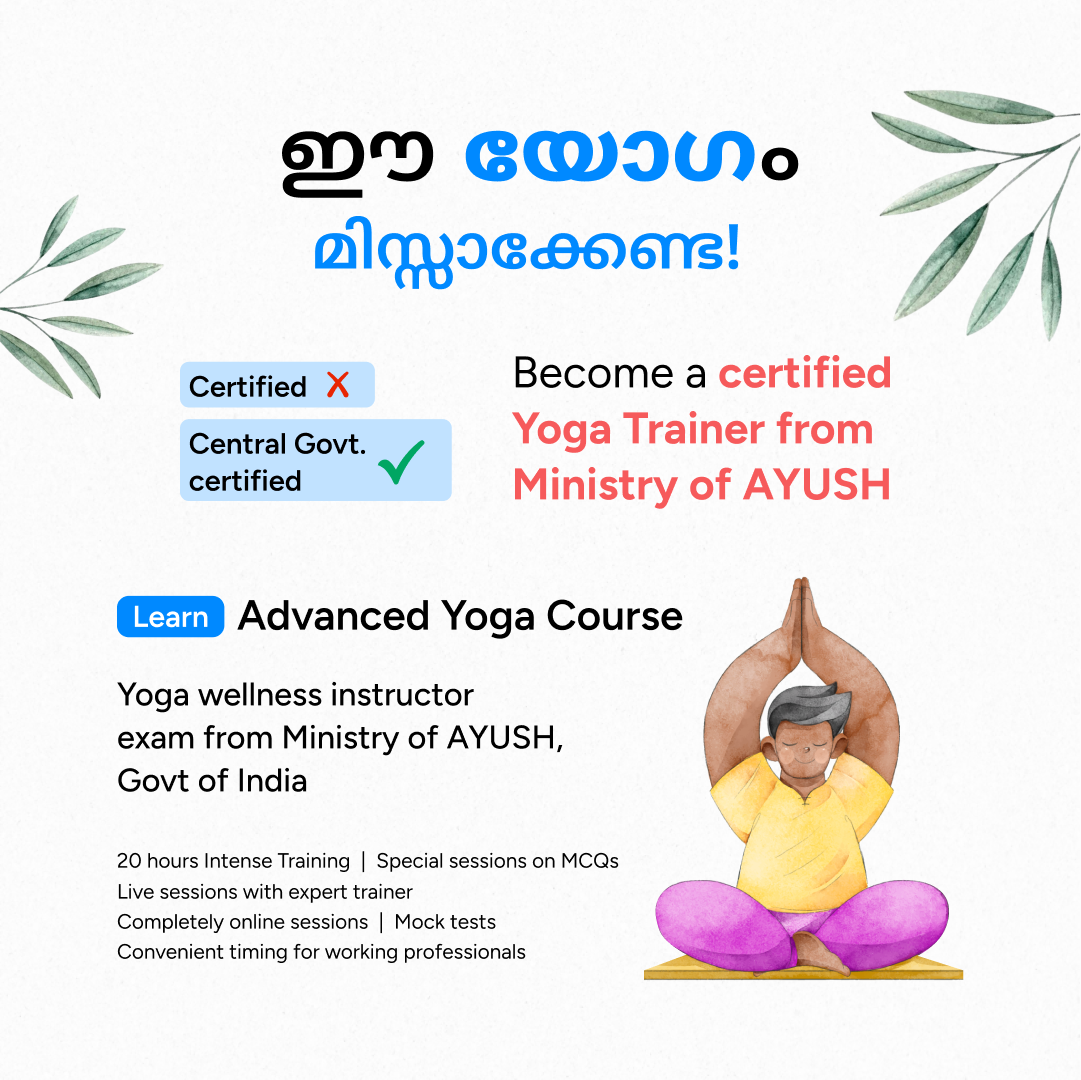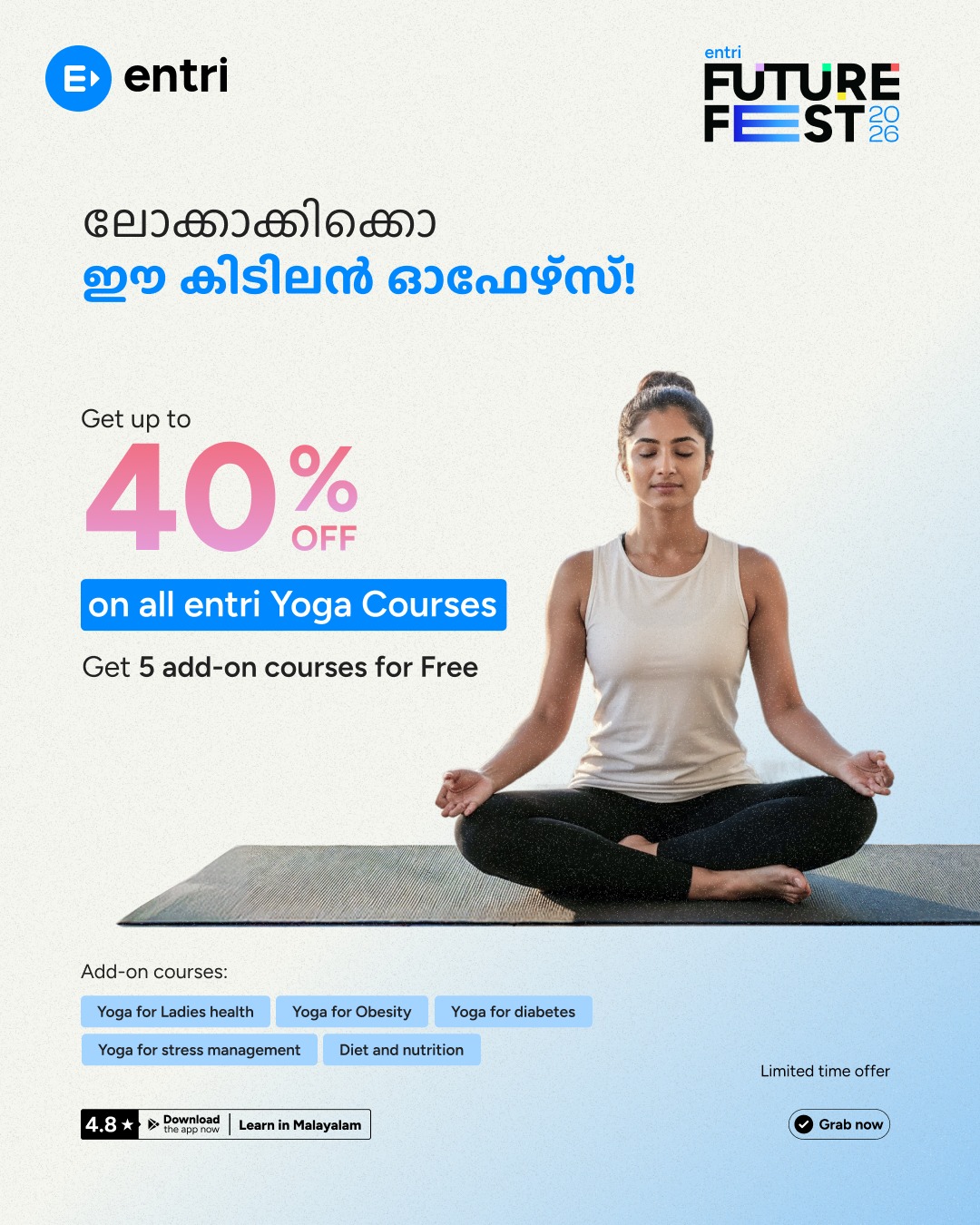Table of Contents
Introduction
Yoga is a miracle for your physical, mental and emotional health. With its combination of strength, flexibility and balance, it’s one of the numerous postures that make up this age-old discipline. This pose is accessible to all ages and fitness levels and can be integrated into numerous yoga flows.
Let’s explore the Triangle Pose and its benefits, proper technique and alignment tips, as well as variations in this blog. We’ll also notice how incorporating Triangle Pose into your routine yoga practice optimizes mobility, increases strength, and clears the mind. We’ll also briefly discuss how offerings such as the Entriyoga Course can help you advance your practice and hone your understanding of poses like Trikonasana.
Get Confident! Join Our Yoga Teacher Training Course!
What is Triangle Pose (Trikonasana)?
1: Which of these is the primary goal of yoga practice?
Triangle, or Trikonasana, is a traditional standing pose where you spread your legs and extend one hand to the ground and the other to the heavens. The body creates an inverted triangle and the emphasis is on opening the hips, lengthening the spine and strengthening the legs.
Here’s how to get into Triangle Pose:
- Stand with feet wide, 3 to 4 feet.
- Turn your left foot out by 90 degrees and your right foot slightly inward.
- Extend your arms out to the sides, parallel to the floor.
- Reach your left hand down towards your left foot while simultaneously extending your right arm upward, creating a straight line from your feet to your fingertips.
- Leave your chest open and your torso pointing forward with straight knees.
- Find stillness in the pose for a few breaths, and then switch sides.
Triangle Pose is a yoga staple, appearing in nearly every Vinyasa and Hatha flow. It yields whole-body benefits — great for beginners and seasoned vets.
Become a Certified Yoga Instructor
Yoga Teacher Training Course by Entri App: Master authentic yoga techniques, earn certification, and build a successful career as a professional yoga instructor.
Join Now!Benefits of Triangle Pose
Flexibility
One of the biggest benefits of Triangle Pose is flexibility. This pose stretches and lengthens many parts of the body, especially the legs, hips and spine.
- Legs: It stretches the hamstrings, calves and inner thighs.
- Hips: As you go deeper into the stretch, the hip flexors are also engaged.
- Spine: The rotation and extension of the torso lengthens the spine, overall back flexibility.
Regular practice of Trikonasana can help to release stiffness in these areas and increase mobility and flexibility.
Strengthens the Legs
Triangle Pose requires strength in the legs to balance and stabilize. This pose targets the following muscles:
- Quads: The legs have to support the body weight while the hips are opening.
- Hamstrings: As the body is stretching over the legs, the hamstrings are deeply engaged and stretched.
- Glutes: The pose also tones and activates the gluteal muscles to help stabilize the body.
This strong foundation of leg strength helps in posture and stability in other yoga poses and in daily activities.
Balance and Coordination
Balance is a big part of Triangle Pose. As you stretch the body in two opposite directions, it helps to improve coordination and mental focus. You have to engage your core to stay steady, which also helps in body awareness and balance.
Practicing balance poses like Trikonasana regularly improves proprioception (awareness of your body in space) and overall physical balance.
Opens the Hips and Chest
One of the key benefits of Triangle Pose is that it opens the hips and chest. The movement allows for external rotation of the hips, which helps to increase flexibility in this area, release tension and prevent hip tightness.
The chest opening also helps to improve posture, release tension in the shoulders and open the rib cage for deeper breathing.
Stretches the Sides of the Body
As you extend your arms and reach for your foot in Triangle Pose, the side body is deeply stretched. This side stretch helps to increase flexibility of the lateral muscles (obliques and intercostals) and the range of motion of the torso.
This lateral stretch is especially good for posture as it releases tension along the sides of the body.
Better Digestion
The twist in Triangle Pose stimulates the abdominal organs, digestion. It helps to release bloating and constipation by increasing blood flow to the digestive tract. Regular practice can promote healthier metabolism and overall abdominal health.
Mental Clarity and Focus
Like many yoga poses Triangle Pose brings mental clarity and calm. By combining the stretch with steady breathing, you can quiet the mind and increase focus. The effort to maintain the alignment in this pose also encourages concentration making it a great pose for calming the mind and increasing mindfulness.
Common Mistakes to Avoid in Triangle Pose
While Triangle Pose is accessible to most, there are some common mistakes that can reduce its effectiveness or cause discomfort. Here are some tips for maintaining proper alignment:
1. Avoid Overstretching
- It’s easy to push yourself too hard in the pose. Only go as far as you can comfortably stretch, and keep the pose gentle, especially if you’re a beginner.
2. Don’t Collapse the Chest
- Make sure your chest stays open and facing forward. Don’t allow your torso to collapse inward, as this can strain the back and shoulders.
3. Keep the Knees Straight
- Make sure your front leg is completely straight in the pose to maintain stability. Avoid letting the knee bend inward or outward.
4. Align Your Feet Properly
- Ensure that your feet are aligned properly to provide a solid foundation for the pose. The front foot should face forward, and the back foot should be slightly angled inwards.
Variations of Triangle Pose
For those who wish to take their practice deeper, there are multiple variations of Triangle Pose that focus on various areas or intensify the challenge.
- Extended Triangle Pose (Utthita Trikonasana)
This version is to reach both arms out and stretch the torso further towards the forward leg. This posture supports a deeper stretch and more core/leg engagement.
- Revolved Triangle Pose (Parivrtta Trikonasana)
A bit more intense, Revolved Triangle Pose requires you to twist your torso towards the opposite side, activating your obliques and spine, while still holding the fundamental triangle form.
- Supported Triangle Pose
For beginners or those with tight hips or hamstrings, the supported variation is done with a block under the bottom hand. This offers more balance and less stress on the body so you can instead concentrate on alignment and breath.
Become a Certified Yoga Instructor
Yoga Teacher Training Course by Entri App: Master authentic yoga techniques, earn certification, and build a successful career as a professional yoga instructor.
Join Now!How Entri Yoga Course comperes with mastering triangle pose
The Entri Yoga Course is great for specific poses like Triangle Pose and for taking your practice to the next level.
- Alignment Tips: The course instructs proper alignment for the Triangle Pose to prevent strain and optimize the posture’s benefits.
- Breath Control: No yoga without breath, and Entri’s makes a point to infuse each pose, even Trikonasana , with pranayama.
- Personalized Direction: Armed with pro-level coaches, Entri delivers personal feedback to assist practitioners in honing their methodology and getting the most out of their practice.
- Complete Curriculum: Beginner to Advanced, the Entri Yoga Course provides a complete curriculum spanning strength, flexibility and mental clarity with poses such as Triangle Pose.
If you’re a yoga enthusiast looking to deepen your practice and knowledge about fundamental to advanced postures, Entri Yoga Course is worth enrolling in.
Key Takeaways
- Triangle Pose (Trikonasana) is a super asana for flexibility, balance, strength and focus.
- Practicing Triangle Pose regularly can result in better posture, reduced stress, and enhanced digestion.
- You also want to ensure you are properly aligned and executing the pose in a way that you do not injure yourself and receive the most benefit from the pose.
- The Entriyoga Yoga Course takes you from yoga beginner to expert, with professional advice on perfecting Triangle Pose, tailored feedback, and an expansive curriculum.
Conclusion
Triange Pose, or Trikonasana, is the most liberating and practical posture for the beginner to advanced student. Alternatively, if it is flexibility, strength, or mental clarity that you are pursuing, look no further; this asana will also help you get there. Incorporating the Triangle Pose into your practice will have you on the path to a healthier body and mind.
For anyone wanting more and to sharpen their practice, the Entri Yoga Course is ideal! Considering, as an example, the alignment, breath, and hands-on feedback that you will find in this course, the syllabus, and the quality of teachers, you will learn how each pose, like Trikonasana, can be powerful.
Unroll your mat to Triangle Pose and begin your journey towards a healthier body and mind today or discover how Entri Yoga Course can take your yoga experience to the next level.
Become a Certified Yoga Instructor
Yoga Teacher Training Course by Entri App: Master authentic yoga techniques, earn certification, and build a successful career as a professional yoga instructor.
Join Now!Frequently Asked Questions
What is the Triangle Pose in yoga?
The Triangle Pose, or Trikonasana, is a standing posture that improves balance, flexibility, and stability. It stretches the sides of the body and strengthens the legs and spine.
What are the main benefits of practising Triangle Pose?
Triangle Pose strengthens the legs, tones the core, improves digestion, and increases overall flexibility. It also helps open the chest and improve breathing capacity.
How do I perform the Triangle Pose correctly?
Start by standing with your feet wide apart, turn one foot outward, extend your arms, and lean over your front leg while keeping both legs straight and your chest open.
Can beginners practise Trikonasana safely?
Yes, beginners can easily practise it by using props like yoga blocks for support and focusing on alignment rather than depth.
What muscles does the Triangle Pose target?
It primarily works the hamstrings, hips, calves, shoulders, and obliques, while also engaging the spine and core muscles for stability.
How long should I hold the Triangle Pose?
Hold the pose for 20–30 seconds on each side, focusing on steady breathing and maintaining proper alignment.
Is the Triangle Pose good for back pain?
Yes, when done correctly, it stretches and strengthens the spine, relieving stiffness and improving posture. However, those with back injuries should modify the pose.
What is the difference between Triangle Pose and Extended Triangle Pose?
In the Extended Triangle Pose, the upper arm reaches overhead, creating a deeper stretch along the side body, while the traditional Triangle Pose has the arm reaching straight up.
Can I do Trikonasana daily?
Absolutely. Practising it daily enhances flexibility, strengthens the lower body, and promotes mindfulness and relaxation.
How can I improve my alignment in Triangle Pose?
Work with a certified instructor or join structured yoga programs like the Entri Yoga TTC Course, where you learn precise alignment, breathing techniques, and pose sequencing.


